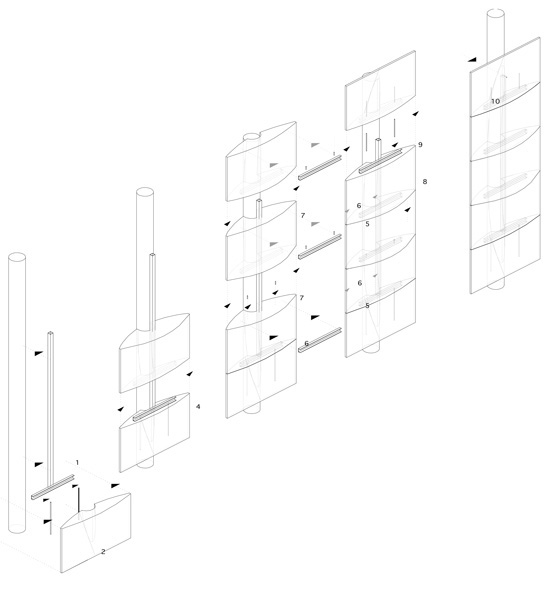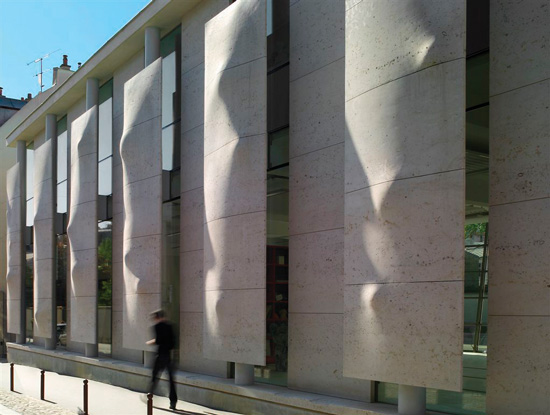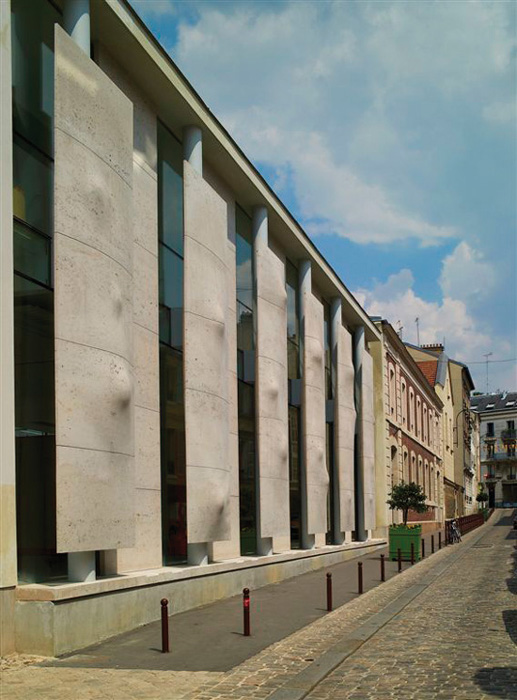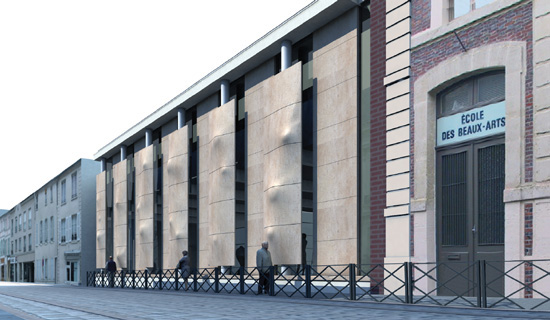Sustainability, Modular Design, and BIM
Platane Architecture: BIM as a Collaborative Tool
The French firm of Platane Architecture, headed up by Platane Beres, has embraced the use of BIM completely in their work. With it, they have been able to go directly from concept to manufacturing and bring distinctive elements of their buildings to life. They recognize that there are many ways that BIM can tie in directly to construction and fabrication. By identifying different materials and systems, current cost information from contractors, suppliers, or fabricators can be linked, allowing for real-time cost estimate updates as the design progresses. The computer model can also be used directly as the basis for manufacturing and fabrication, thus eliminating the need for separate shop drawings. When construction begins, sequence and time schedules for fabrication, transportation, and assembly can all be developed based on information in the model. Where appropriate, the software can coordinate with 3-D printers or industrial equipment to not only model the components but to actually create them for installation.
All of this requires the ability to collaborate with others, and firm principal Platane Beres praises the BIM process for facilitating a more fluid exchange of information. This allows for easier collaboration on a project with the ability to model data both internally and externally. The ability to make changes easily in BIM also sets it apart from previous design workflows. At the center of the program that it uses is the ability to simply double-click on any item to edit it. Beres points out, “This is really crazy in terms of the ease of modifications. It is very, very powerful...It’s a way of thinking.” Since changes are inevitable and often frequent, this saves the design team a good deal of time. Further, the use and extraction of data from 3-D models is an important component of the BIM process. The firm relies on intelligent 3-D models because 2-D misses so much important information. “A 3-D model has no ‘holes;’ it provides complete, unlimited numbers of sections and therefore complete control over every situation with practically no extra effort. It’s the most like real life,” according to Beres. In the office, the team works in 3-D, and then extracts the 2-D documents, 3-D files, data, or selected information to share with other team members as needed.
Conclusion
While the concepts of integration, modularity, sustainability, and computerized modeling were introduced separately in this article, a closer examination has revealed that in reality they are all part of the same evolving process of building design and construction. The principles of mass customization, modular design, and sustainability can all be readily combined into a building project that is being managed and controlled through the use of BIM, while simultaneously integrating the design and construction teams. What is particularly significant is that all of these aspects can apply to buildings and practices of any size. In fact, it makes it easier for smaller firms to compete by engaging with other team members electronically, focusing around a central building information model and working via Internet with anyone, anywhere. Overall, better, more sustainable, and mass-customized designs are possible with architects being more directly involved in overseeing the details of the actual construction. It is indeed an exciting time to be an architect.
 |
Vectorworks Inc. |












